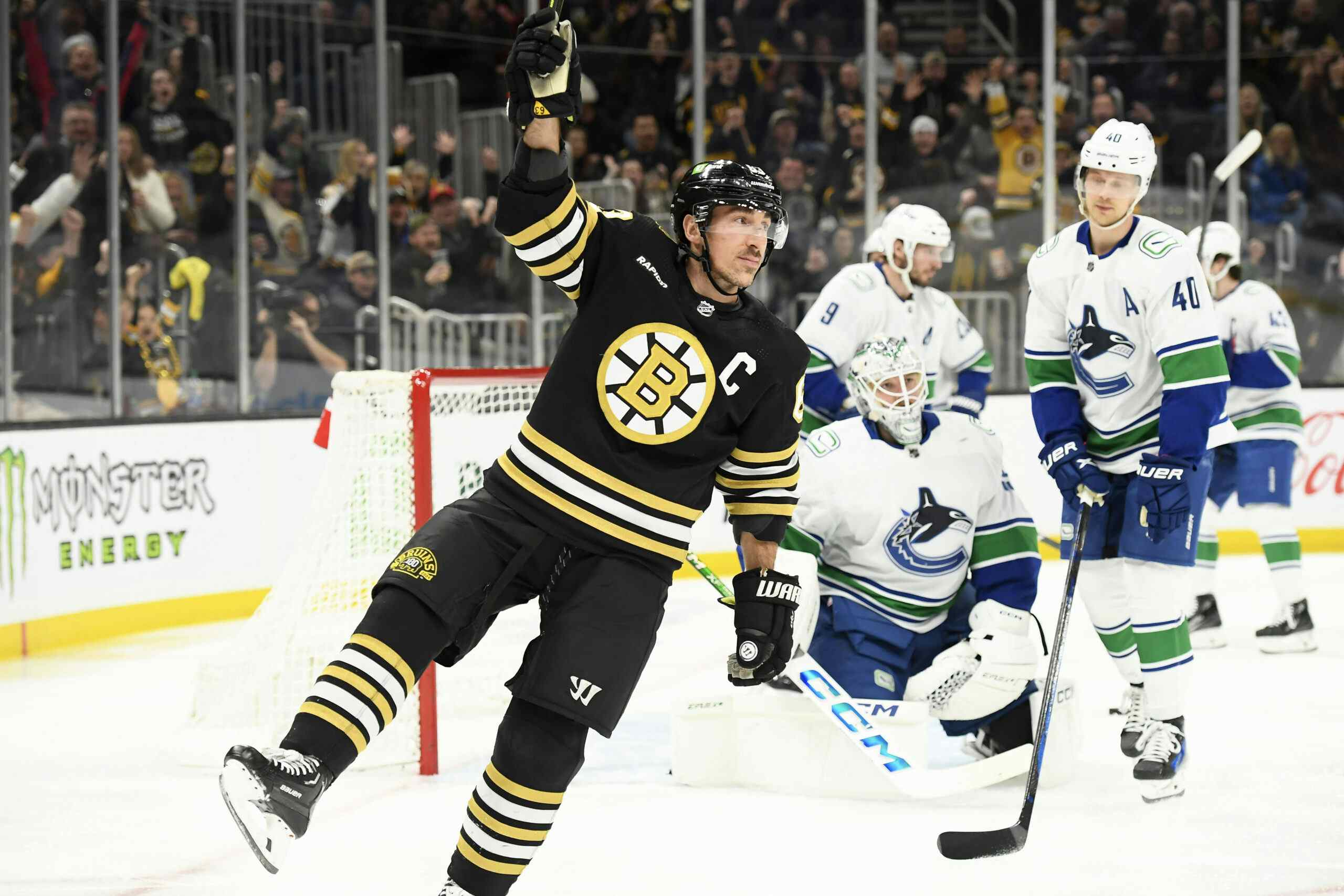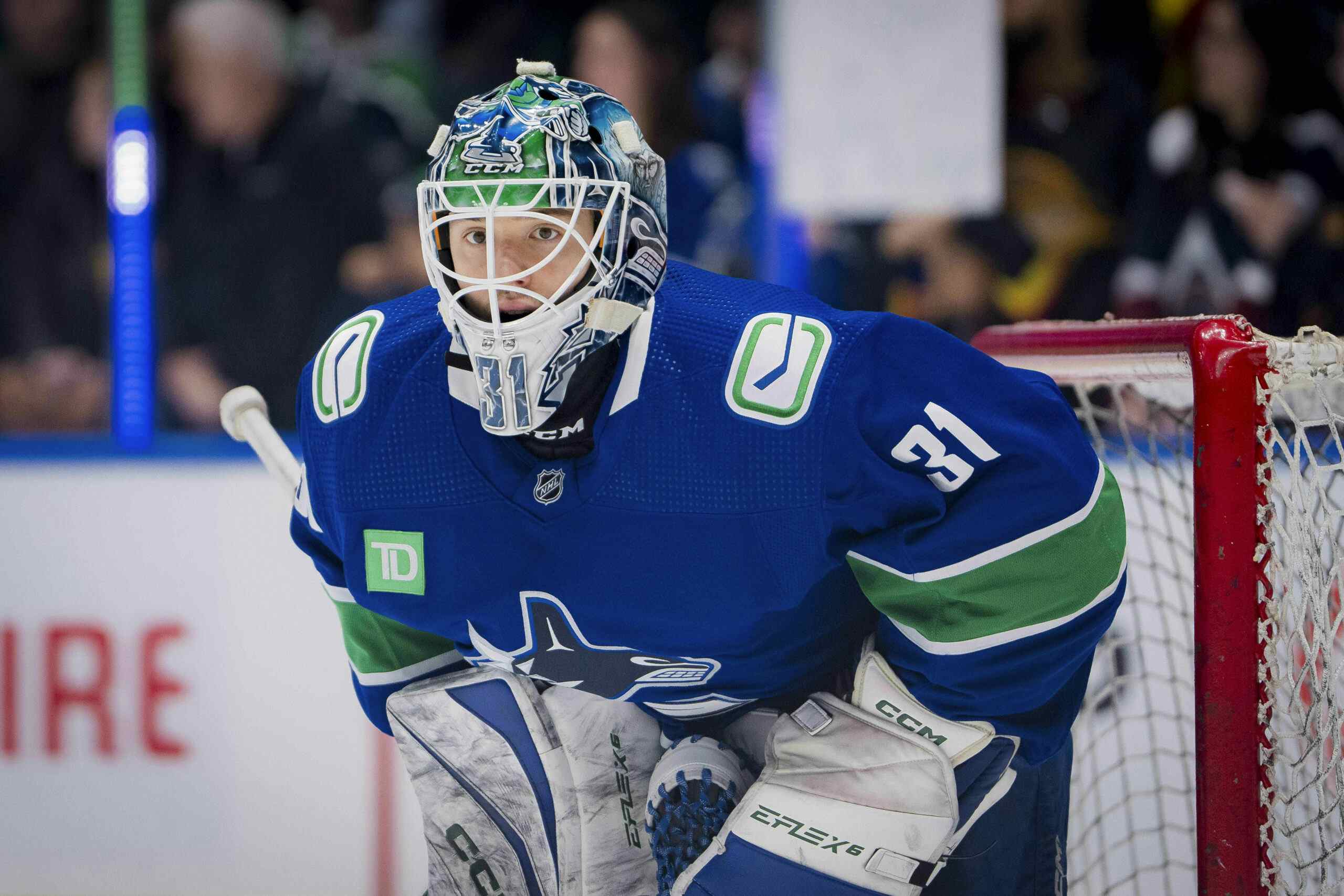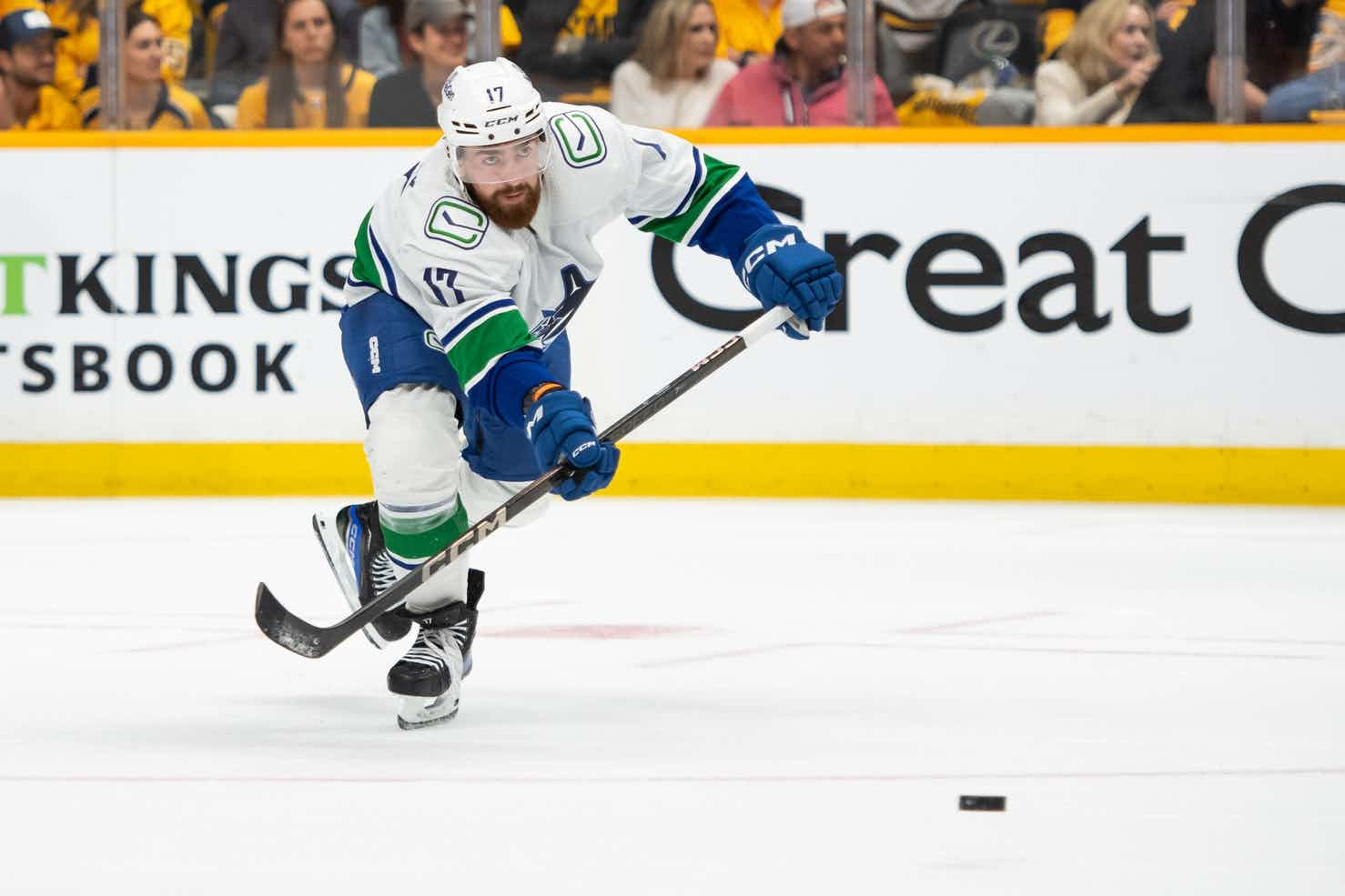Jim Benning’s Year 1 Report Card – Part 4: Conclusion
By money puck
8 years agoIt’s fitting to conclude my review of Jim Benning’s first year as General Manager of the Canucks near the eve of the 2015 draft and free agency, which promises to be action packed for Canucks fans.
We’ll have a look back on the year that was for Jim Benning and his management team after the jump.
The Canucks go into the draft with only $5M in cap space, but a number of important players yet to sign including Adam Clendening, Frank Corrado, Yannick Weber, Jacob Markstrom (unless he’s moved), Linden Vey, and Sven Baertschi. In order to re-sign some or all of these players, the Canucks will need to shed some salary, the most likely targets being 2016 UFA’s Eddie Lack, Radim Vrbata, Dan Hamhuis, and/or Kevin Bieksa.
Trades
On balance, I think Canucks fan should feel reasonably confident that Benning will get fair value for trades that are bound to happen, as I thought that overall he did a pretty good job in his first year trades:
| Date | Aquired | Gave up | Grade (out of 10) |
|---|---|---|---|
| 27-Jun-14 | 2014 1st round pick | 2015 3rd round pick | 8.0 |
| Luca Sbisa | Ryan Kesler | ||
| Nick Bonino | |||
| 2014 3rd round pick (traded to NYR for Derek Dorsett) | |||
| 27-Jun-14 | 2014 2nd round pick (traded to LAK for Linden Vey) | Jason Garrison | 6.5 |
| Jeff Costello | |||
| 2015 7th round pick | |||
| 20-Nov-14 | Will Acton | Kellan Lain | who cares |
| 25-Nov-14 | Andrey Pedan | Alexandre Mallet | 7.5 |
| 2016 3rd round pick | |||
| 29-Jan-15 | Adam Clendening | Gustav Forsling | 8.0 |
| 02-Mar-15 | Sven Baertschi | 2015 2nd round pick | 8.5 |
An interesting dynamic is the salary cap floor, which is set to $52.8M, will require a number of teams to make significant moves to acquire salary, specifically Arizona ($18.6M), Nashville ($12.4M), and Buffalo ($10.7M). This is where a player like Kevin Bieksa would be very attractive to a cap floor team given his cap hit is $4.6M, but his actual salary is only $2.5M. Of course, whether or not he’d actually go to a cap floor team is a different matter entirely, as he has a no-trade clause in his contract and therefore controls his own destiny.
The Canucks currently only have one draft pick (23rd overall) in the first three rounds of the draft, but I expect that to change by draft day, with Lack and others likely moving on from the team in exchange for additional draft selections.
Drafting
I don’t expect to be blown away with his draft performance this weekend, given who was picked last year:
| Overall | Player | Grade |
|---|---|---|
| 6 | Jake Virtanen | 6.50 |
| 24 | Jared McCann | 8.50 |
| 36 | Thatcher Demko | 8.00 |
| 66 | Nikita Tryamkin | 6.00 |
| 126 | Gustav Forsling | 8.50 |
| 156 | Kyle Pettit | 4.00 |
| 186 | Mackenze Stewart | 4.00 |
It’s not that Benning’s 2014 draft was terrible, but it was more the draft philosophy that was concerning. As friend of the blog, Bryan Nikkel (@bryan_nikkel) put it, Benning showed a preference for heavy, two-way players in the 2014 draft, where as many of us would prefer the emphasis be placed on skill, speed, and hockey IQ. That said, we’ve seen Benning flip the script in subsequent trades for smaller, high-skilled guys like Baertschi and Clendening, so I’m hopeful to see this line of thought reflect in the Canucks draft selections. Who knows, maybe watching players like Tyler Johnson and Patrick Kane in the finals may have swayed Benning’s perspective.
Signings
As it stands now, the Canucks simply don’t have the salary cap room to be a real player in free agency, unless of course they shed significant salary. This is probably for the best, given Benning’s contract’s have ranged from excellent (Tanev/Vrbata) to atrocious (every other one):
| AAV | Term (years) | Grade | |
|---|---|---|---|
| Radim Vrbata | $5.00 | 2 | 9.0 |
| Ryan Miller | $6.00 | 3 | 5.0 |
| Chris Tanev | $4.45 | 5 | 9.5 |
| Luca Sbisa | $3.60 | 3 | 3.0 |
| Derek Dorsett | $2.65 | 4 | 5.0 |
Conclusion:
Generally, when a new leadership team takes over an organization, in hockey or otherwise, it’s prudent to take time to figure out just what exactly you’re working with before making major structural decision which will inevitably shape the future of an organization.
It’s not that Benning hasn’t made moves, but rather than structural moves, he’s played around the edges of the core. What we saw in his first year was the moves he knew he had to make, such as moving malcontent Ryan Kesler, getting incrementally younger via trades, and shoring up goaltending and scoring via free agency. The aging core of the roster was left largely intact.
This has led many to question the long-term direction and vision of this management team, with the core getting older, and a distinct shortage of elite talent coming up in the pipeline. However, in my view, this measured approach is far preferable to a team coming in and making ill-informed, hasty decisions right out of the gate.
Now that Benning and Co. have a year under there belt, we may just see what Benning envisions for the future of the team. It remains to be seen whether or not Benning’s future will be one that Canuck fans can excited about.
Others In This Series
Recent articles from money puck





